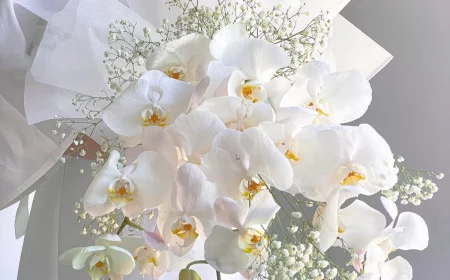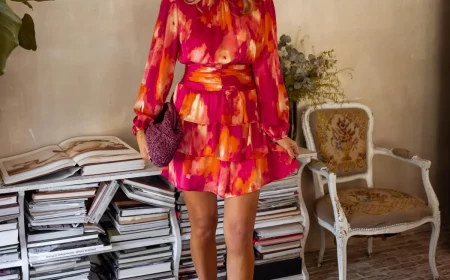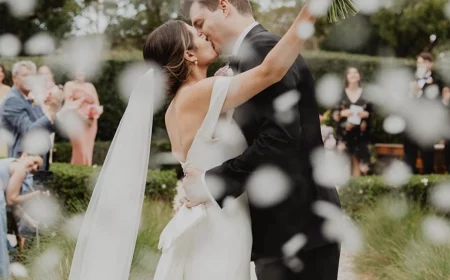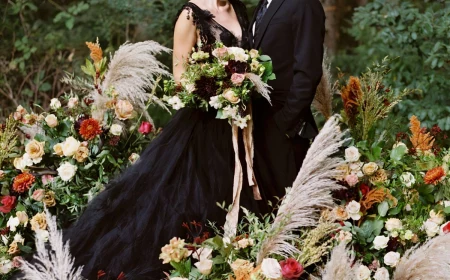A Jeweler’s Guide to Choosing an Engagement Ring That’s Built to Last
I’ve spent more than two decades hunched over a jeweler’s bench, with the cool weight of platinum and the familiar warmth of gold in my hands. I’ve peered through my loupe at countless diamonds, each with its own personality of light. And over all that time, people have asked me the same thing, just in different ways: “How do I pick the right one?” Honestly, they’re not just asking about a ring. They’re asking how to make a great decision about something that carries so much weight and meaning.
In this article
This isn’t a guide about slick marketing slogans or what’s trending this second. The real staying power of a ring isn’t in an ad campaign; it’s in the quality of its construction and materials. It’s in the craft. My whole goal here is to pass on what I’ve learned from thousands of hours spent making, repairing, and restoring these little symbols of a huge promise. We’re going to look at the metals, the stones, and the architecture that holds it all together. This is the stuff you need to know to choose a ring that’s not just beautiful today, but built for a lifetime of tomorrows.

The Foundation: Picking the Right Metal
Think of the metal as the ring’s skeleton. It’s what provides the strength and structure to hold that gorgeous gemstone securely for decades of daily life. Your choice of metal impacts the ring’s color, its heft, its durability, and even how it feels on the skin. People get so focused on the stone that they forget the metal choice is just as critical.
Gold: The Timeless Classic
Gold is the traditional go-to for a reason. It’s beautiful, it’s workable, and it holds its value. But here’s something most people don’t know: pure 24-karat gold is way too soft for an engagement ring. I’ve seen pure gold rings get bent completely out of shape from just a firm handshake. To make it tough enough for everyday wear, we have to mix it with other metals to create a stronger alloy.
The “karat” number just tells you how much pure gold is in the mix. In the U.S., 14k is the most popular for a reason—it’s a real workhorse. At 58.3% pure gold, it hits the sweet spot between rich color and the strength needed to stand up to life. Over in Europe, 18k is more of a standard. It’s 75% pure gold, which gives it a deeper, richer yellow hue. It’s a little softer than 14k, but still perfectly suitable for a well-made ring.
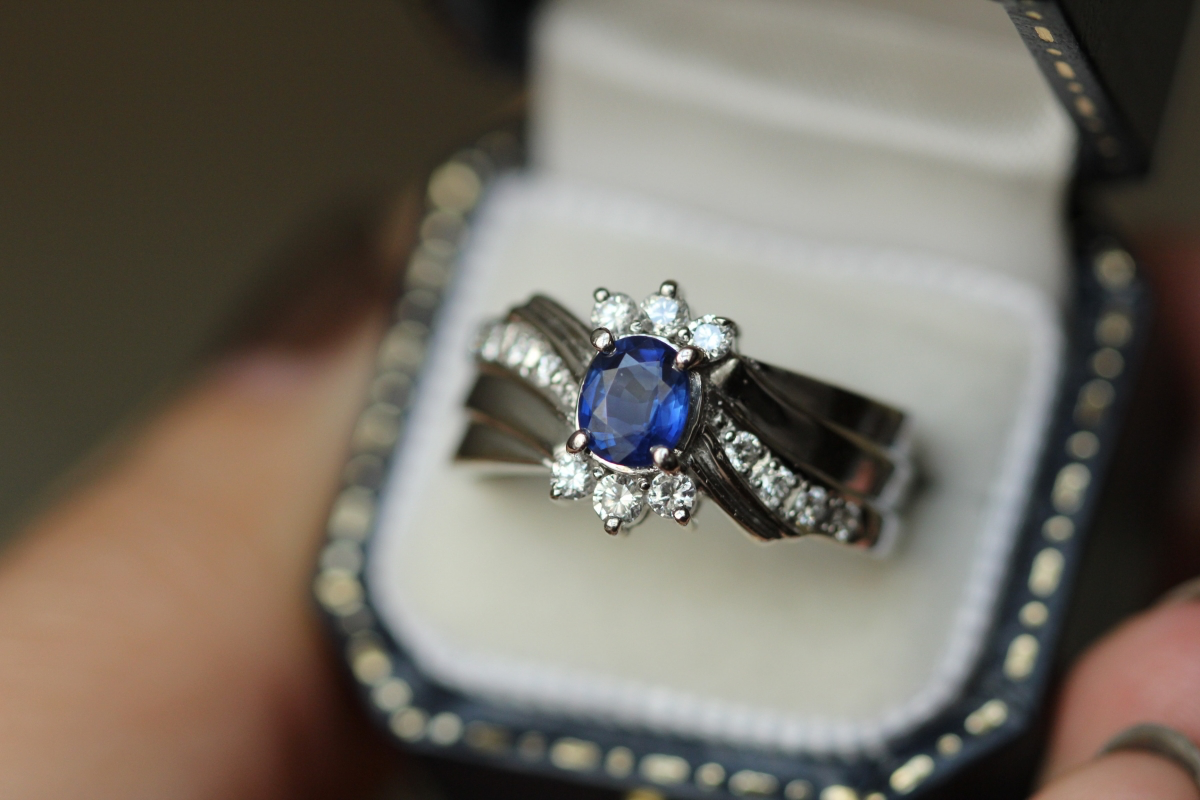
The metals we mix in also decide the color:
- Yellow Gold: This is classic stuff. It’s mixed with a bit of copper and silver to keep that warm, sunny color. It’s a look that honestly flatters almost every skin tone.
- White Gold: To get that bright, modern look, gold is mixed with white metals like palladium or nickel. Now, heads up! Most white gold rings are then plated with rhodium, a super hard, silvery-white metal from the platinum family. This gives it that mirror-like shine, but it does wear off over time. You should plan on getting it re-plated every 1 to 3 years to keep it looking brand new. Expect to pay around $75 to $150 for a quality re-plating, depending on the jeweler. It’s a maintenance cost that catches a lot of people by surprise.
- Rose Gold: This trendy, pinkish color comes from mixing gold with a higher percentage of copper. It’s a beautiful, stylish choice, but be aware that the copper can sometimes cause a reaction in people with very sensitive skin.
Oh yeah, a quick note on allergies. Some people have a pretty serious nickel allergy. If you’re leaning toward white gold, I always suggest asking for a palladium-based alloy. It’s hypoallergenic and saves you from the potential itchy rash that nickel can cause. It’s a small detail that makes a world of difference in daily comfort.
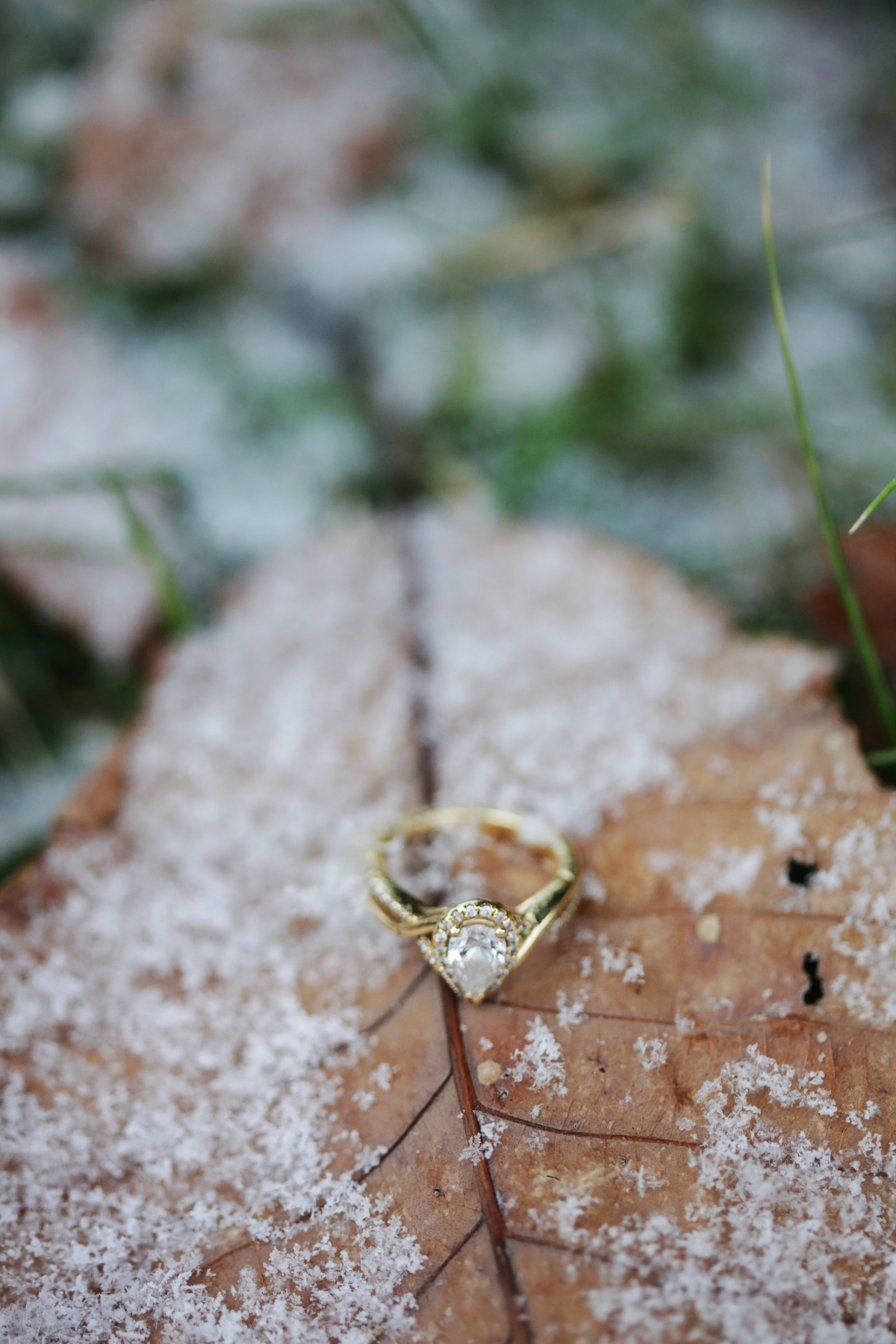
Platinum: The Premium Powerhouse
When someone comes to me and wants the most secure, most durable option, especially if they’re setting a large or very valuable diamond, I almost always point them to platinum. It’s a denser metal than gold, so a platinum ring will feel noticeably heavier in your hand—a heft that many people associate with quality and permanence.
Platinum is naturally a silvery-white color, so it never needs to be plated. Its color won’t change or fade. Over many years, it develops a soft, satin finish called a patina. Some people absolutely love this distinguished, lived-in look. If you prefer a high shine, any jeweler can polish it back to its original luster in a few minutes. But its real superpower is its strength. Platinum is way less brittle than gold. When you scratch it, the metal gets displaced rather than lost. This means platinum prongs are incredibly secure and wear down much, much slower than gold prongs. For holding a diamond that costs as much as a car, that peace of mind is priceless.
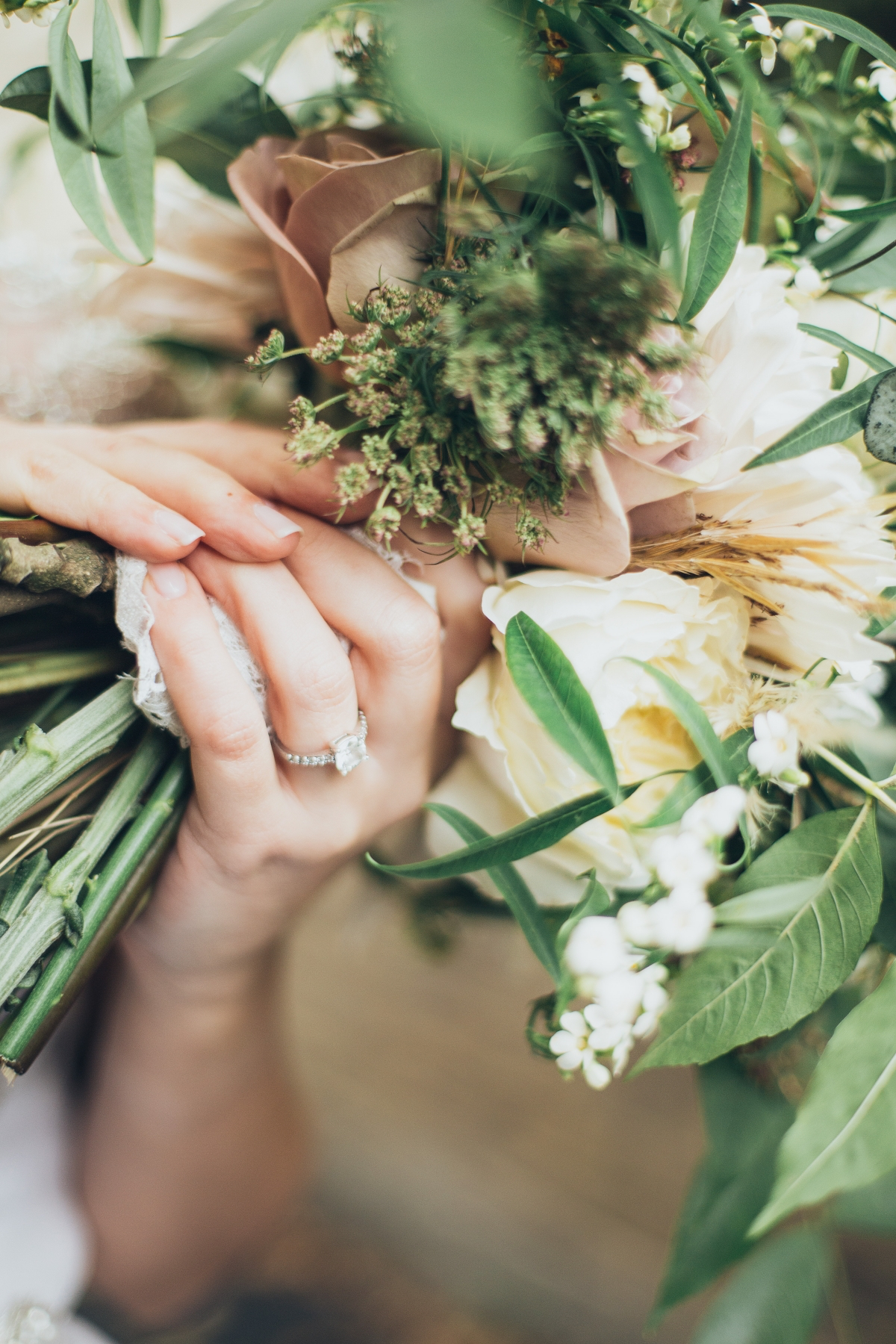
So, what’s the catch? Platinum is denser and rarer, so a platinum setting will typically cost about 40-60% more than the same design in 14k gold. But remember, you’re saving on those long-term re-plating costs, so for some, it evens out over a lifetime.
The Heart of It All: Choosing the Center Stone
The center stone is the main event. It’s what catches the light and everyone’s eye. And while diamonds are the undisputed champion of engagement rings, the world of gemstones is vast and full of personality. Understanding what makes them tick is key to a smart choice.
A Jeweler’s Take on Diamonds (Beyond the 4Cs)
The standard grading system for diamonds—Cut, Color, Clarity, and Carat—is a good starting point. But a piece of paper with grades on it doesn’t tell you the whole story. Here’s what I actually look for at my bench, and what I tell my clients to prioritize.

My quick-and-dirty budget priority list? It goes like this: 1. Cut (ALWAYS), 2. Carat (buy shy of the big numbers), 3. Color (G-H is the sweet spot), and 4. Clarity (‘eye-clean’ is all you need). Sticking to this order will give you the most beautiful diamond for your money, I promise.
- Cut: The Source of Sparkle. This is the most important C, period. It’s not about the shape (round, oval, etc.). Cut refers to the quality of the diamond’s angles and facets. A well-cut diamond is like a tiny, perfectly engineered hall of mirrors. It pulls in light, bounces it around, and shoots it back out at your eye as brilliance (brightness), fire (rainbow flashes), and sparkle. An excellent cut can make a diamond look bigger and more brilliant than a poorly cut stone of a higher carat weight. Always, always put as much of your budget as possible into the best cut grade you can afford.
- Color: The Absence of It. For diamonds, the best color is no color. The scale runs from D (colorless) to Z (lightly colored). To be frank, the differences are tiny. A G or H color diamond will look perfectly white to the naked eye once it’s in a ring, and you can save a ton of money compared to a truly colorless one. The metal choice matters here, too. A diamond with a hint of warmth (say, a J or K color) can look stunning and intentional in a yellow or rose gold setting.
- Clarity: A Story of Imperfections. Clarity grades the tiny internal characteristics (inclusions) in a diamond. Here’s a tip that has saved my clients thousands: you don’t need a flawless diamond. You just need an “eye-clean” diamond, meaning its flaws aren’t visible without a 10x jeweler’s loupe. I had a client once who was agonizing over getting a super expensive VVS1 stone. I showed him a beautiful VS2 next to it—he couldn’t tell the difference at all. He went with the VS2 and used the savings to get a much larger, better-cut diamond. The goal is a beautiful ring, not a perfect lab report.
- Carat: Just a Number. Carat is simply a measure of weight (one carat = 200 milligrams), not size. A poorly cut 1.00-carat diamond can actually look smaller than a well-cut 0.95-carat one. Another pro tip: buy just shy of the popular “magic” carat weights. A 0.90-carat diamond costs significantly less than a 1.00-carat, but the visual difference is almost impossible to spot.
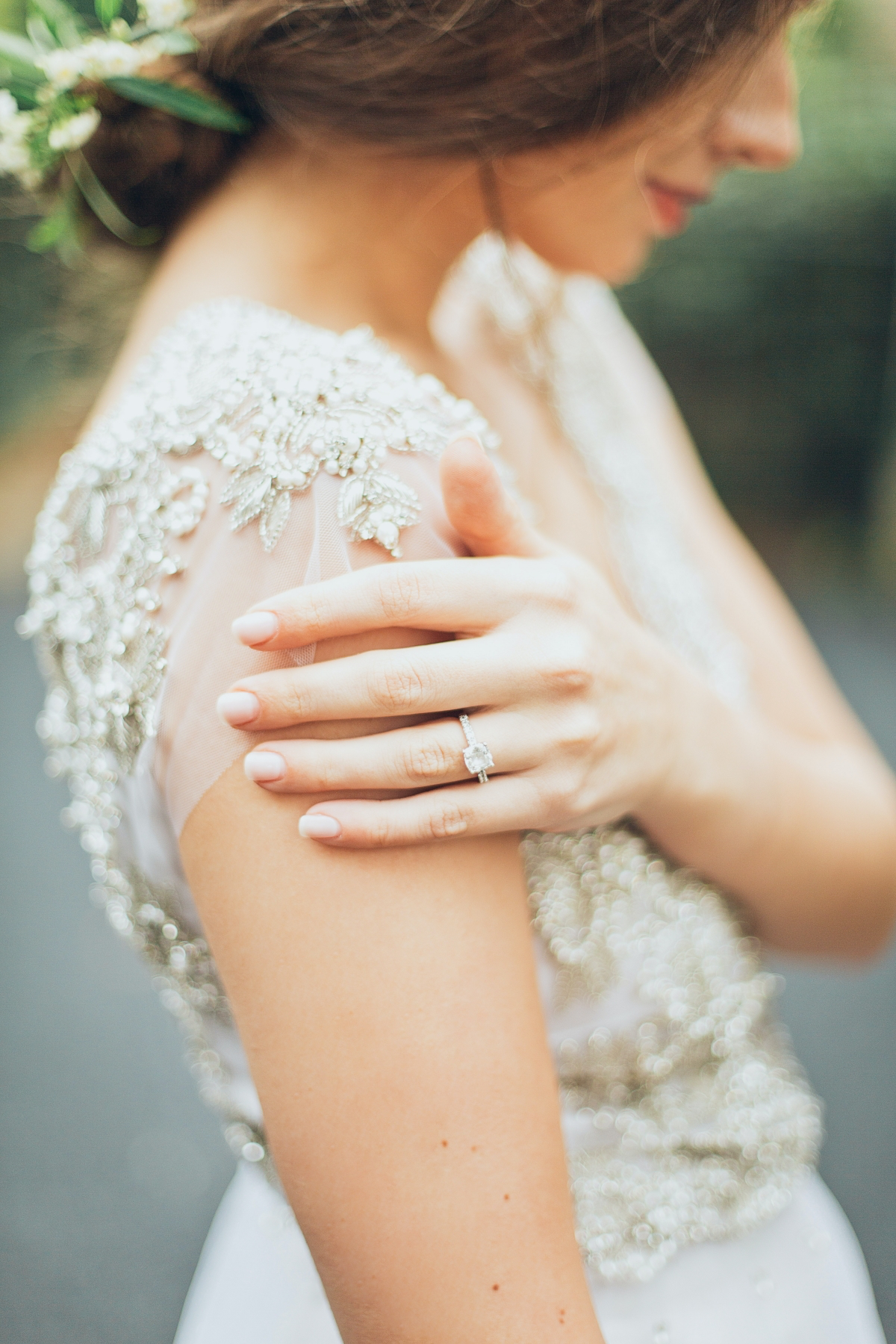
Thinking Beyond Diamonds?
Diamonds are famous for their hardness (a 10 on the Mohs scale), but other stones offer incredible color and value. You just have to be mindful of durability for a ring you’ll wear every day.
- Sapphire and Ruby: These are both forms of a mineral called corundum and are a 9 on the Mohs scale. This makes them fantastic, durable choices for an engagement ring. And sapphires don’t just come in blue—they come in every color of the rainbow!
- Emerald: Known for that stunning, deep green color. However, emeralds are softer (7.5 to 8 on the scale) and are often full of natural inclusions. I always give a strong warning with emeralds. They’re gorgeous but require a protective setting (like a bezel) and a careful owner. I can’t tell you how many beautiful emeralds I’ve seen come back to my bench chipped because they were worn during a workout.
- Moissanite: A lab-created stone that’s exploded in popularity. It has even more fire (rainbow flashes) than a diamond and is very hard (9.25 on the Mohs scale). It’s a brilliant and affordable alternative.
Lab-Grown vs. Mined: The Real Deal
This is the big conversation today. Let’s be clear: a lab-grown diamond is chemically, physically, and optically identical to a mined one. The only difference is its origin. A lab report will note that it’s lab-grown, but it’s graded on the exact same scale.
There’s no right or wrong answer here; it’s a totally personal choice. To put it in perspective, for the same budget, you can often get a lab-grown diamond that’s 30-50% larger or has better specs than its mined counterpart. That’s a game-changer for a lot of couples. On the other hand, mined diamonds carry the romance of being created by the earth millions of years ago. My job isn’t to push you one way or the other, but to give you the facts so you can make a choice that feels right for you.
The Architecture: How to Hold Your Stone
The setting is the metal framework that holds the stone. It has two simple jobs: protect the stone and show off its beauty. The style of the setting is what gives the ring its entire personality.
- Prong Setting: The classic, claw-like holder. It uses the least amount of metal, so the most light can get into the diamond, maximizing sparkle. The tradeoff? Prongs can snag on sweaters and wear down over time. I tell all my clients with prong-set rings to bring them in for a free check-up every 6 to 12 months. It takes me five minutes to check the prongs under my loupe, and it can prevent a total disaster.
- Bezel Setting: This is a thin metal rim that wraps all the way around the stone. It’s the most secure setting you can get. I once made a bezel-set ring for a nurse who was constantly washing her hands and wearing gloves. She told me years later it still looked perfect and she never had to worry about it. That’s the peace of mind a bezel gives you. It’s a great choice for active people or for softer stones like emeralds.
- Halo Setting: A circle of tiny pavé diamonds around the center stone. It’s a clever design trick to make the main stone look bigger and add a ton of extra sparkle. A well-made halo is stunning. A poorly made one is a nightmare of lost stones. A good halo should feel smooth to the touch, not scratchy.
- Pavé Setting: From the French word for “paved,” this is where the band itself is covered in tiny diamonds. It creates a continuous surface of glitter. It’s gorgeous, but it’s delicate. And please, for the love of all that is sparkly, don’t wear your pavé ring to the gym or while gardening. I’ve repaired more pavé bands than I can count where a dumbbell or a rock has knocked a few of those tiny stones loose. It’s beautiful, but it’s not built for hard labor.
By the way, you can also draw inspiration from classic design eras. Think of the romantic, ornate styles that often featured natural motifs like flowers and vines, typically set in warm yellow or rose gold. Or consider the delicate, almost lace-like metalwork made possible by strong white metals, giving rings an airy and feminine feel. And then there are the bold, architectural styles with strong geometric lines and dramatic color contrasts, like sparkling diamonds set against deep blue sapphires or black onyx.
The Final Steps: Finding a Jeweler and Protecting Your Ring
Choosing a ring is a process. And working with a good jeweler should feel like a partnership, not a high-pressure sale.
Finding the Right Pro
So how do you find a good jeweler? Look for someone who is eager to educate you, not just sell to you. A huge green flag is a shop with a workshop on-site. It means the people there understand how rings are actually built and how they hold up over time. When you visit, have a few questions ready. Ask them, “Do you have a certified gemologist on staff?” “Can I see some examples of your custom work?” and “What kind of warranty or service plan do you offer?” Their answers will tell you everything you need to know about their expertise and commitment to quality.
The Custom Route
If you decide to go custom, be patient. A quality job takes time, usually around 6 to 10 weeks from start to finish. Rushing the process just leads to mistakes. It involves sketching ideas, seeing a 3D digital model, and even holding a wax version before the final ring is cast, set, and polished by hand.
Don’t Skip This: Appraisals and Insurance
Once you have the ring, you absolutely must get it appraised and insured. An appraisal is a detailed document that gives the ring’s retail replacement value. You give this document to an insurance company. It’s a small annual cost—often part of a homeowner’s or renter’s policy, or a separate policy from a company like Jewelers Mutual for around 1-2% of the ring’s value per year—that protects you from the heartbreak of loss, theft, or damage. I’ve seen that heartbreak firsthand. Please, just get the insurance.
Living With Your Ring: Care and Common Sense
An engagement ring is made to be worn, but it’s not indestructible. Good care is essential.
You can easily clean your ring at home with a bowl of warm water and a few drops of simple dish soap. Let it soak for a bit, then use a soft baby toothbrush to gently scrub behind the stone where lotion and life’s grime builds up. Rinse it well and pat it dry with a lint-free cloth.
And bring it to your jeweler at least once a year. Most reputable shops offer a complimentary annual cleaning and prong check, especially for rings they made or sold. It’s good business for us and priceless peace of mind for you. We use professional cleaners to make it sparkle like new and, more importantly, we check the whole setting under magnification to catch any problems before they start.
Know When to Take It Off
This might be the most important advice I can give. For your ring’s safety (and yours!), take it off when you are:
- Working out or playing sports. A barbell can easily bend the band or even crack a diamond.
- Gardening or doing heavy chores. Dirt gets everywhere, and heavy work can cause serious damage.
- Cleaning with harsh chemicals. Bleach and other chemicals can badly damage the metals.
- Swimming. Cold water makes your fingers shrink, and it’s shockingly easy for a ring to slip off and be lost forever in a lake or ocean.
An engagement ring is a symbol of a promise. When you choose it with knowledge and care, you ensure that the object itself is as strong and as lasting as the commitment it represents. The perfect ring isn’t the one with the biggest price tag. It’s the one that’s well-made, well-loved, and chosen with a true understanding of the craft behind it.
Inspirational Gallery
Is a bezel setting safer than a classic prong setting?
For maximum security, yes. A bezel setting encases the girdle of the gemstone in a thin, custom-fit metal rim, acting like a protective bumper. It’s the most secure setting available and is ideal for people with very active lifestyles or jobs. A traditional prong setting, while showcasing more of the diamond, holds the stone only at specific points. While perfectly secure when well-made, a prong can be more susceptible to snagging and, over many years, may require re-tipping to ensure it holds the stone tightly.
A diamond is the hardest natural substance on Earth, rating a 10 on the Mohs scale of hardness.
What this means practically is that only another diamond can scratch a diamond. However, this refers to surface scratching, not chipping. A diamond’s crystalline structure has cleavage planes, and a hard, direct impact—like hitting it on a granite countertop at just the right angle—can cause it to chip or fracture. This is why the ring’s setting is so critical; it’s the stone’s first line of defense against impact.
The Hidden Detail: The Importance of the Shank’s Thickness
Beyond the metal type, look at the band itself, known as the shank. An ultra-thin, delicate band might be trendy, but a shank that’s less than 1.8mm thick can be prone to bending or even breaking with years of wear. For a ring that’s truly built to last, a shank width of 2mm to 2.5mm provides a solid foundation without appearing bulky, ensuring the ring maintains its perfect circle for a lifetime.
- A brighter, livelier sparkle.
- Fewer sharp corners to snag or chip.
- A timeless look that resists trends.
The secret? Choosing a Round Brilliant cut. Its 58 facets are mathematically perfected to maximize light return, making it the most brilliant of all cuts. Its lack of sharp points also makes it one of the most durable choices for an active hand, minimizing the risk of damage over the decades.
Thinking about a non-diamond center stone? Durability is key. Here are two excellent, long-lasting alternatives:
- Sapphire: Part of the corundum family, sapphires rate a 9 on the Mohs scale, second only to diamonds. They come in a rainbow of colors, with blue being the most famous. A high-quality sapphire from a reputable source like the Ceylonese or Madagascan mines can be a vibrant and enduring choice.
- Moissanite: A lab-created gemstone that rates a 9.25 on the Mohs scale. It’s known for its exceptional brilliance and fire, often exceeding that of a diamond. Brands like Charles & Colvard have perfected the creation of colorless, high-clarity moissanite that offers a durable and ethical alternative at a lower price point.
During World War II, the U.S. government declared platinum a strategic metal, making its use in non-military applications, including jewelry, illegal.
White Gold: An alloy of pure gold and white metals like palladium or nickel, which is then often plated with rhodium for a bright white finish. This rhodium plating will wear off over time (typically every 1-3 years) and require re-plating to maintain its color.
Platinum: A naturally white metal that is denser and rarer than gold. It will never fade or change color. When it scratches, the metal is displaced rather than lost, creating a unique patina over time that many find beautiful. For a low-maintenance ring that stays white forever, platinum is the superior choice.
Look to the past for designs proven to last. The geometric and bold lines of the Art Deco period (1920s-1930s) often featured bezel or channel settings, which are incredibly secure. The intricate, lace-like metalwork of the Edwardian era (1901-1910), while delicate in appearance, was crafted in platinum for strength, demonstrating that a ring can be both ornate and durable.
Don’t forget the insurance. It’s the least romantic part of the process, but the most crucial for long-term peace of mind. Get a detailed appraisal from a certified gemologist (not just the store’s receipt). Then, add the ring to your homeowner’s or renter’s insurance policy with a specific ‘rider’ or ‘floater,’ or get a separate policy from a specialized jewelry insurer like Jewelers Mutual. This protects your investment against loss, theft, and sometimes even damage.
Your ring will encounter everything you do—lotions, soaps, oils, and daily grime. To keep it secure and sparkling, a simple at-home cleaning routine is essential.
- Mix a few drops of gentle dish soap (like original Dawn) in a bowl of warm water.
- Let the ring soak for 20-30 minutes to loosen dirt.
- Use a super-soft baby toothbrush to gently scrub behind the stone and around the setting.
- Rinse under warm running water and pat dry with a soft, lint-free cloth.

